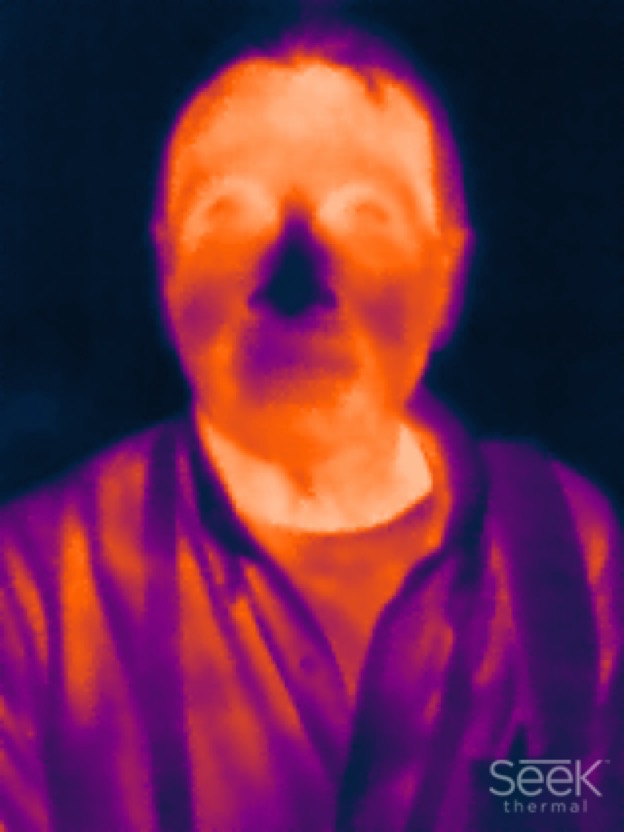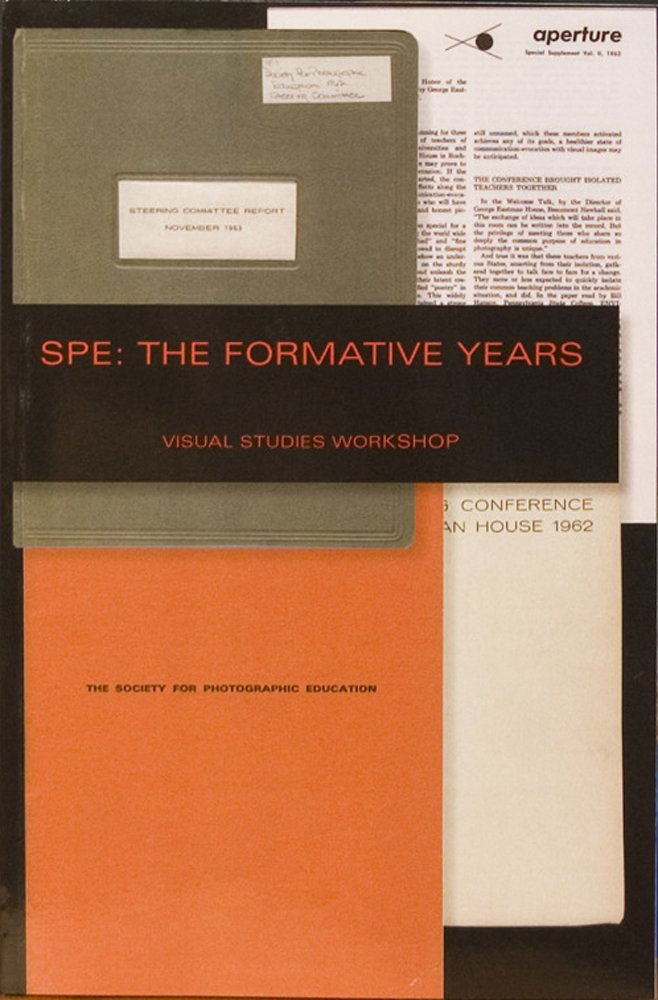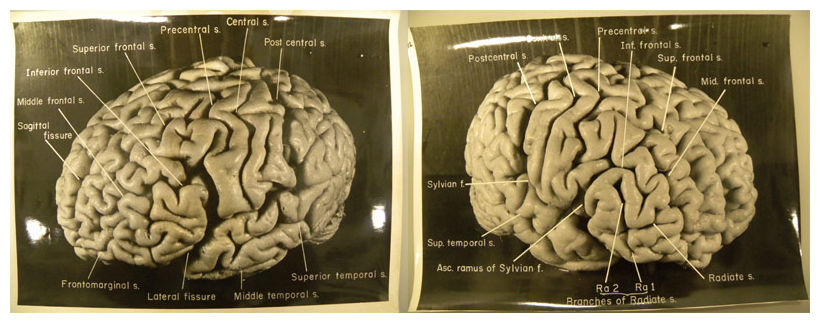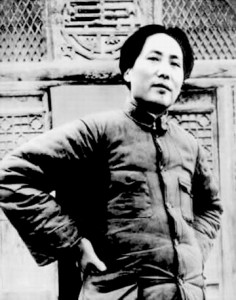 On the Friday of Memorial Day weekend here on Staten Island we suddenly plunged from a chilly spring straight into hot summer. Nothing gradual about it. I was ready for some warm, but I prefer a slow slide into it and a slow climb out. And our then-recently planted veggies seemed skeptical about the sharp blast of high heat. Subsequently it reverted to normal spring days and nights, and the garden looks happy.
On the Friday of Memorial Day weekend here on Staten Island we suddenly plunged from a chilly spring straight into hot summer. Nothing gradual about it. I was ready for some warm, but I prefer a slow slide into it and a slow climb out. And our then-recently planted veggies seemed skeptical about the sharp blast of high heat. Subsequently it reverted to normal spring days and nights, and the garden looks happy.
Having lived in the same neighborhood for almost half a century, I can say with some assurance that the weather pattern here has changed, not so slowly — quite noticeably over the past 15 years.
From Little Acorns

Nathan Lyons, “SPE: The Formative Years” (2012), cover
On May 28 I published a review of the 2013 book edited by Nathan Lyons, SPE: The Formative Years (Rochester: VSW/SPE, 2012; $20, ISBN: 978-0898221428) at the website Camera Chronicle. If the issue of photography education concerns you, this should prove of interest. The book contains “the enabling documents” — that is, Lyons’s letter of invitation and the proceedings — of the 1962 conference at George Eastman House in Rochester, NY, from which grew the Society for Photographic Education.
This book is important reading for anyone concerned with photo education — you’ll wonder how we got from there to here in just 54 years … We are devo, as I’ve argued in previous posts.
My review also pinpoints the culprit responsible for the now-entrenched, grammatically incorrect usage of the adjectival form “photographic” to modify the noun “education.” You’ll never guess.
Repent, Sinners!
I don’t even know what to make of Babymetal’s “Gimme Chocolate,” just as I couldn’t figure out Kyary Pamyu Pamyu’s video for her 2011 hit song “PONPONPON.” The imagery simply swims in my head without coalescing, and the tune has an insidious earworm aspect.

Babymetal meets Rob Zombie, 2016
Babymetal — the singers are Suzuka Nakamoto as “Su-metal,” Yui Mizuno as “Yuimetal,” and Moa Kikuchi as “Moametal” — has (have?) created considerable controversy among heavy-metal fans, may of whom consider them an insult to the form. Despite that, they’ve already earned the endorsements of such death-metal stalwarts as Rob Zombie and Rob Halford.
It all feels to me like some mashup between parallel universes — not as grisly as Jeff Goldblum in The Fly, but just wrong. Neither of the musical forms involved — metal and something the Japanese call “idol” — appeals to me in the least, though I try to stay enough abreast of cultural trends to not seem a total geezer. Yet, though these girls manifest undeniable wholesome cuteness, I need convincing that this bodes well for the future, and does not definitely represent the end of western and eastern civilization as we know them.
Birds of a Feather
Those who think I spend too much time lamenting the demise of serious criticism of photography — as well as those who egg me on when I do so — might want to spend some time with Ted Gioia’s polemic, “Music Criticism Has Degenerated Into Lifestyle Reporting,” published at The Daily Beast back on March 18, 2014.
I just came across it, but immediately recognized a kindred spirit. Hunt around and you will find versions of this analysis from serious critics in virtually every medium — literature, music, theater, film. The tsunami of uninformed opinionating released by the internet has swamped informed commentary, and under those homogenizing circumstances cream definitely doesn’t rise to the top.
But shit still floats.
Physics for Dummies, 1

Erwin Schrödinger, 1933. Courtesy Nobel Foundation.
Once upon a time, back in 1935, an Austrian physicist named Erwin Schrödinger had a cat who not only had nine lives but could be simultaneously alive and dead if it hid in a box with some poison. That’s because Schrödinger’s cat (who is known only as “Schrödinger’s cat,” an odd name to give your own cat, but then quantum physicists are odd ducks) came from Copenhagen, Denmark, where all kinds of things can be simultaneously alive and dead — not just cats but people, and even culture. Just ask Colleen Thornton.
Schrödinger’s cat lived on decaying particles while in that box. These are either a form of dander, in which case watch out if you have allergies, or a discreet physicists’ euphemism for cat poop, in which case you really don’t want to visualize it. (I warned you.)
Then Schrödinger died. But, although he remained dead, he somehow got to keep his cat, which continued its simultaneously-alive-and-dead existence as long as it stayed in its box — but not in Schrödinger’s box, which is six feet deep somewhere. (Think of this cat as the great-great-great-great-grandfather of Maru.)

Billie the Bengal, 11-20-15. Photo by A. D. Coleman.
Eighty-six years later, Schrödinger’s cat got lonely being simultaneously alive and dead as long as it stayed in its box, subsisting on those decaying particles. If you have ever cleaned a cat’s litter, you can imagine how many decaying particles pile up over close to nine decades. And how unhappy that cat must be; they’re so fastidious. Our cat Billie, who does not seem dead to us (but we’re no physicists), wouldn’t stand for it, and would make her displeasure known in no uncertain terms. She also insists on two meals a day, plus snacks.
Anyhow, some animal-loving young physicists got Schrödinger’s cat another cat to keep it company. Or they helped Schrödinger’s cat generate a doppelgänger, a duplicate or simulacrum of itself. They’re not exactly clear about this, but it sounds a bit like a child’s imaginary friend. Schrödinger’s second cat (or the clone of his first cat) lives in its own box — where it too can be simultaneously alive and dead — while surviving on the same diet of decaying particles. Either way, these young physicists claim the two cats are made of “confined microwave light.”
No, just to reassure you, so far as I can tell these young physicists did not put any cats in the microwave oven. And I don’t know how you would make a cat out of microwave light. Our microwave’s light seems reasonably confined; you can barely read anything by it outside its door when it’s on. But I can say with some confidence that Billie isn’t made of light. Nothing made of light has to lick its own bottom.
Schrödinger’s two cats communicate through a magic sapphire that connects the two boxes; and, when the scientists agitate those particles, the particles — and the two cats — respond energetically to each other, as agitated entities will. They found that if they bother one cat’s particles, the other cat’s particles get bothered too, even though they’re in separate boxes. This the scientists call “entanglement.” (Any cat lover could have told them that. Last summer, something seriously bothered the particles of Billie and our second cat, Mini, as a result of which they got so entangled that we had to separate them permanently, housing them thereafter on different floors of the house.)

“Einstein’s brain,” photos by Thomas Harvey, 1955.
The physicists also refer to this behavior as “spooky action at a distance” — apparently a reference to Einstein, a physicist friend of Schrödinger’s (who also remains dead). Everyone who has spent time around cats knows what “spooky action” means (there are hundreds of YouTube videos documenting this behavior), and it fascinates us just as much as it does physicists.
Next lesson: How to sneak up on particles in a vacuum tube and spy on them without perturbing them, so you can see what they really get up to when they don’t know you’re looking.
Everything New Seems Old Again
As a relatively recent but now inveterate China-watcher, I found the response of the Chinese government to the 50th anniversary of the start of the Cultural Revolution (May 16, 1966) fascinating:

Mao in Yan’an, 1946. Photographer unknown.
State media controlled by the ruling Chinese Communist Party on Tuesday broke an official silence on the decade of political violence known as the Cultural Revolution, which began 50 years ago this week, saying China should put the past behind it and avoid further discussion of the “huge disaster.”
“The decade-long internal chaos was a huge disaster,” the Global Times newspaper, which has close ties to the party, wrote in an opinion article published in the early hours of Tuesday morning. …
The Global Times said the ‘”decade of calamity” that began with a red block headline “Announcement” in the People’s Daily on May 16, 1966, had left many in China with permanent psychological scars.
“It is not possible for such a revolution to be repeated,” the paper said, adding: “We have bid farewell to the Cultural Revolution. We can say it once again today that the Cultural Revolution cannot and will not come back.”

Commemorative Edition of the Yan’an Talks (2012), cover.
Retired Shandong University professor Sun Wenguang said Tuesday’s editorials are likely a response to a feared backlash over a recent “private” performance of Mao-era revolutionary songs at the Great Hall of the People in Beijing. …
“They played red songs and displayed portraits of Mao Zedong with his Red Guards armband,” Sun said. “That song, ‘Sailing the Seas Depends on the Helmsman,’ was basically the theme tune of the Cultural Revolution from start to finish.”
“People thought they were trying to advocate [a return to] the Cultural Revolution.”
(See the May 17, 2016 report by Xin Lin for RFA’s Mandarin Service, and by Ho Shan for the Cantonese Service, published by Radio Free Asia.)
The irony here, of course, is that the Cultural Revolution had as its core premise the demand that “China should put the past behind it” by eliminating what they called “the four olds”: Old Customs, Old Culture, Old Habits, and Old Ideas. Plus ça change …
•
 Special offer: If you want me to either continue pursuing a particular subject or give you a break and (for one post) write on a topic — my choice — other than the current main story, make a donation of $50 via the PayPal widget below, indicating your preference in a note accompanying your donation. I’ll credit you as that new post’s sponsor, and link to a website of your choosing. Include a note with your snail-mail address (or email it to me separately) for a free signed copy of my 1995 book Critical Focus!
Special offer: If you want me to either continue pursuing a particular subject or give you a break and (for one post) write on a topic — my choice — other than the current main story, make a donation of $50 via the PayPal widget below, indicating your preference in a note accompanying your donation. I’ll credit you as that new post’s sponsor, and link to a website of your choosing. Include a note with your snail-mail address (or email it to me separately) for a free signed copy of my 1995 book Critical Focus!
Spring Fever 2016: Bits & Pieces (2)
Having lived in the same neighborhood for almost half a century, I can say with some assurance that the weather pattern here has changed, not so slowly — quite noticeably over the past 15 years.
From Little Acorns
Nathan Lyons, “SPE: The Formative Years” (2012), cover
On May 28 I published a review of the 2013 book edited by Nathan Lyons, SPE: The Formative Years (Rochester: VSW/SPE, 2012; $20, ISBN: 978-0898221428) at the website Camera Chronicle. If the issue of photography education concerns you, this should prove of interest. The book contains “the enabling documents” — that is, Lyons’s letter of invitation and the proceedings — of the 1962 conference at George Eastman House in Rochester, NY, from which grew the Society for Photographic Education.
This book is important reading for anyone concerned with photo education — you’ll wonder how we got from there to here in just 54 years … We are devo, as I’ve argued in previous posts.
My review also pinpoints the culprit responsible for the now-entrenched, grammatically incorrect usage of the adjectival form “photographic” to modify the noun “education.” You’ll never guess.
Repent, Sinners!
I don’t even know what to make of Babymetal’s “Gimme Chocolate,” just as I couldn’t figure out Kyary Pamyu Pamyu’s video for her 2011 hit song “PONPONPON.” The imagery simply swims in my head without coalescing, and the tune has an insidious earworm aspect.
Babymetal meets Rob Zombie, 2016
Babymetal — the singers are Suzuka Nakamoto as “Su-metal,” Yui Mizuno as “Yuimetal,” and Moa Kikuchi as “Moametal” — has (have?) created considerable controversy among heavy-metal fans, may of whom consider them an insult to the form. Despite that, they’ve already earned the endorsements of such death-metal stalwarts as Rob Zombie and Rob Halford.
It all feels to me like some mashup between parallel universes — not as grisly as Jeff Goldblum in The Fly, but just wrong. Neither of the musical forms involved — metal and something the Japanese call “idol” — appeals to me in the least, though I try to stay enough abreast of cultural trends to not seem a total geezer. Yet, though these girls manifest undeniable wholesome cuteness, I need convincing that this bodes well for the future, and does not definitely represent the end of western and eastern civilization as we know them.
Birds of a Feather
Those who think I spend too much time lamenting the demise of serious criticism of photography — as well as those who egg me on when I do so — might want to spend some time with Ted Gioia’s polemic, “Music Criticism Has Degenerated Into Lifestyle Reporting,” published at The Daily Beast back on March 18, 2014.
I just came across it, but immediately recognized a kindred spirit. Hunt around and you will find versions of this analysis from serious critics in virtually every medium — literature, music, theater, film. The tsunami of uninformed opinionating released by the internet has swamped informed commentary, and under those homogenizing circumstances cream definitely doesn’t rise to the top.
But shit still floats.
Physics for Dummies, 1
Erwin Schrödinger, 1933. Courtesy Nobel Foundation.
Once upon a time, back in 1935, an Austrian physicist named Erwin Schrödinger had a cat who not only had nine lives but could be simultaneously alive and dead if it hid in a box with some poison. That’s because Schrödinger’s cat (who is known only as “Schrödinger’s cat,” an odd name to give your own cat, but then quantum physicists are odd ducks) came from Copenhagen, Denmark, where all kinds of things can be simultaneously alive and dead — not just cats but people, and even culture. Just ask Colleen Thornton.
Schrödinger’s cat lived on decaying particles while in that box. These are either a form of dander, in which case watch out if you have allergies, or a discreet physicists’ euphemism for cat poop, in which case you really don’t want to visualize it. (I warned you.)
Then Schrödinger died. But, although he remained dead, he somehow got to keep his cat, which continued its simultaneously-alive-and-dead existence as long as it stayed in its box — but not in Schrödinger’s box, which is six feet deep somewhere. (Think of this cat as the great-great-great-great-grandfather of Maru.)
Billie the Bengal, 11-20-15. Photo by A. D. Coleman.
Eighty-six years later, Schrödinger’s cat got lonely being simultaneously alive and dead as long as it stayed in its box, subsisting on those decaying particles. If you have ever cleaned a cat’s litter, you can imagine how many decaying particles pile up over close to nine decades. And how unhappy that cat must be; they’re so fastidious. Our cat Billie, who does not seem dead to us (but we’re no physicists), wouldn’t stand for it, and would make her displeasure known in no uncertain terms. She also insists on two meals a day, plus snacks.
Anyhow, some animal-loving young physicists got Schrödinger’s cat another cat to keep it company. Or they helped Schrödinger’s cat generate a doppelgänger, a duplicate or simulacrum of itself. They’re not exactly clear about this, but it sounds a bit like a child’s imaginary friend. Schrödinger’s second cat (or the clone of his first cat) lives in its own box — where it too can be simultaneously alive and dead — while surviving on the same diet of decaying particles. Either way, these young physicists claim the two cats are made of “confined microwave light.”
No, just to reassure you, so far as I can tell these young physicists did not put any cats in the microwave oven. And I don’t know how you would make a cat out of microwave light. Our microwave’s light seems reasonably confined; you can barely read anything by it outside its door when it’s on. But I can say with some confidence that Billie isn’t made of light. Nothing made of light has to lick its own bottom.
Schrödinger’s two cats communicate through a magic sapphire that connects the two boxes; and, when the scientists agitate those particles, the particles — and the two cats — respond energetically to each other, as agitated entities will. They found that if they bother one cat’s particles, the other cat’s particles get bothered too, even though they’re in separate boxes. This the scientists call “entanglement.” (Any cat lover could have told them that. Last summer, something seriously bothered the particles of Billie and our second cat, Mini, as a result of which they got so entangled that we had to separate them permanently, housing them thereafter on different floors of the house.)
“Einstein’s brain,” photos by Thomas Harvey, 1955.
The physicists also refer to this behavior as “spooky action at a distance” — apparently a reference to Einstein, a physicist friend of Schrödinger’s (who also remains dead). Everyone who has spent time around cats knows what “spooky action” means (there are hundreds of YouTube videos documenting this behavior), and it fascinates us just as much as it does physicists.
Next lesson: How to sneak up on particles in a vacuum tube and spy on them without perturbing them, so you can see what they really get up to when they don’t know you’re looking.
Everything New Seems Old Again
As a relatively recent but now inveterate China-watcher, I found the response of the Chinese government to the 50th anniversary of the start of the Cultural Revolution (May 16, 1966) fascinating:
Mao in Yan’an, 1946. Photographer unknown.
State media controlled by the ruling Chinese Communist Party on Tuesday broke an official silence on the decade of political violence known as the Cultural Revolution, which began 50 years ago this week, saying China should put the past behind it and avoid further discussion of the “huge disaster.”
“The decade-long internal chaos was a huge disaster,” the Global Times newspaper, which has close ties to the party, wrote in an opinion article published in the early hours of Tuesday morning. …
The Global Times said the ‘”decade of calamity” that began with a red block headline “Announcement” in the People’s Daily on May 16, 1966, had left many in China with permanent psychological scars.
“It is not possible for such a revolution to be repeated,” the paper said, adding: “We have bid farewell to the Cultural Revolution. We can say it once again today that the Cultural Revolution cannot and will not come back.”
Commemorative Edition of the Yan’an Talks (2012), cover.
Retired Shandong University professor Sun Wenguang said Tuesday’s editorials are likely a response to a feared backlash over a recent “private” performance of Mao-era revolutionary songs at the Great Hall of the People in Beijing. …
“They played red songs and displayed portraits of Mao Zedong with his Red Guards armband,” Sun said. “That song, ‘Sailing the Seas Depends on the Helmsman,’ was basically the theme tune of the Cultural Revolution from start to finish.”
“People thought they were trying to advocate [a return to] the Cultural Revolution.”
(See the May 17, 2016 report by Xin Lin for RFA’s Mandarin Service, and by Ho Shan for the Cantonese Service, published by Radio Free Asia.)
The irony here, of course, is that the Cultural Revolution had as its core premise the demand that “China should put the past behind it” by eliminating what they called “the four olds”: Old Customs, Old Culture, Old Habits, and Old Ideas. Plus ça change …
•